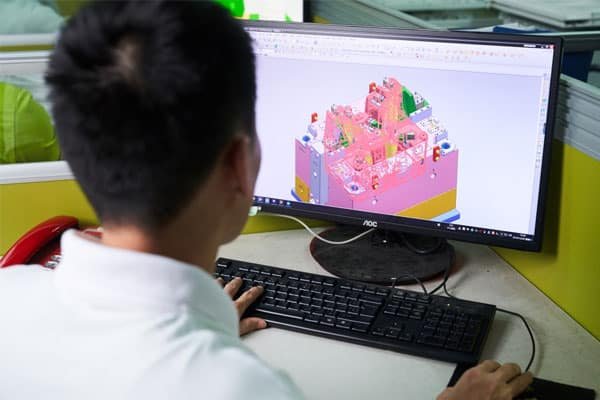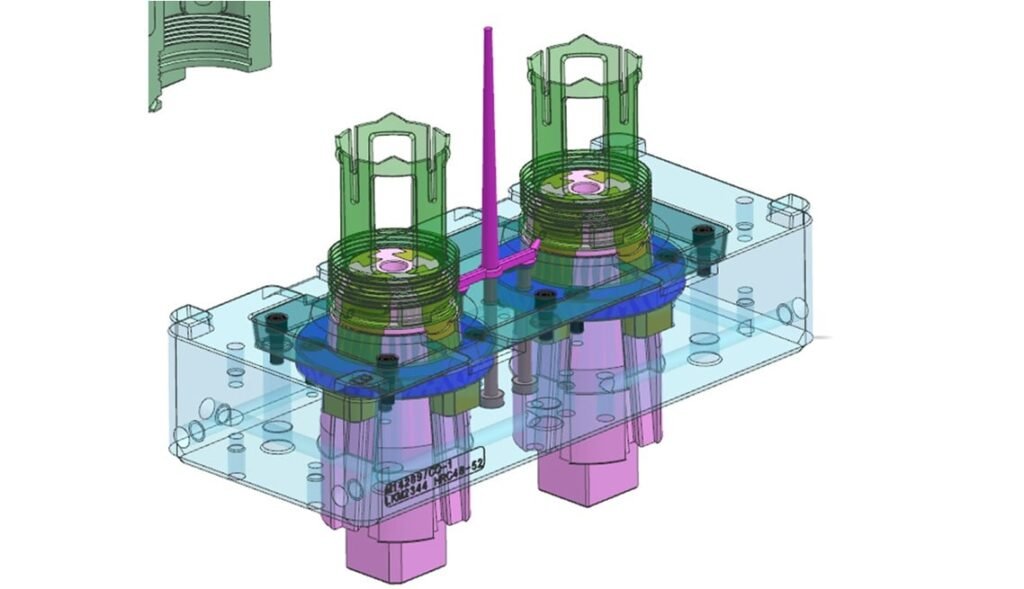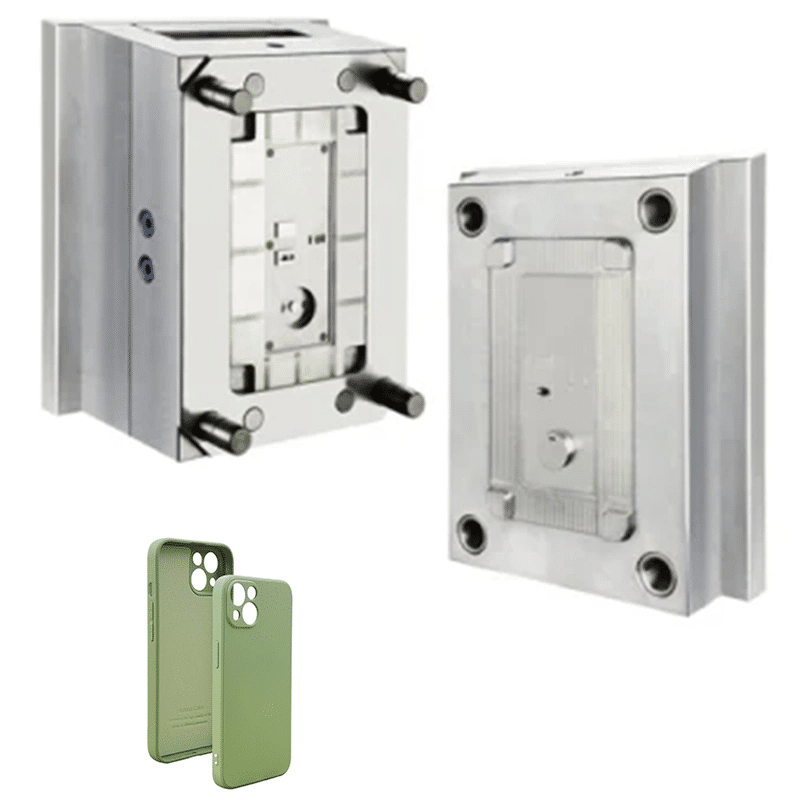A reliable plastic mold design mainly reflects in the quality of the molded plastic products (appearance quality and dimensional stability), and the convenience, speed, and simplicity of processing and manufacturing. It saves both money and manpower, leaving room for correction and improvement, and is safe, stable, easy to maintain during use. It has a short molding cycle and long service life during injection molding, as well as reasonable mold manufacturing processability.

1.Main process of factory mold design
The customer provides product drawings → analyzes the product → confirms the plastic type → confirms the mold material → converts to engineering drawings → performs shrinkage for mirror imaging → completes the assembly drawing → orders mold bases → orders mold core materials → pulls out the mold → 3D splits → determines the runner/gate method → conducts structural design with reference to the placement diagram → disassembles inserts → corrects 3D → produces engineering drawings (mold core/inserts/mold bases/spare parts) → creates a BOM table → checks and approves.
2.Several aspects to be considered in design
When we start mold design, we should pay more attention to considering several options, weighing the advantages and disadvantages of each option, and selecting the best one. For T-molds, we should also take them seriously. Due to time and knowledge constraints, we may think that a reasonable design may have room for improvement after production and use.
After submitting the design plan, it is necessary to communicate more with the factory to understand the processing process and manufacturing usage. Each set of molds should have a fixed analysis experience and a process of summarizing gains and losses, so as to continuously improve the level of mold design.
3) During the design process, it is important to refer to similar drawings that have been designed in the past and draw on their experiences and lessons learned.
4) The mold design department should be a whole, and each design member should not act independently. Especially in the summary and conclusion of mold design, there must be a unique style.

3.Mold design basis
The main basis is the product drawings and samples provided by the customer. Designers must carefully analyze and digest the products and samples, and must check all items one by one during the design process.
- The correctness of dimensions related to dimensional accuracy
1) Plastic products with high appearance requirements and low dimensional accuracy requirements, such as toys, etc. Specific dimensions are subject to matching, but other dimensions can be well matched as long as they are consistent.
Products with strict requirements for external dimensions
Whether the demolding slope is reasonable.
Wall thickness and uniformity of the product.
Plastic types. (Selection of mold steel and determination of shrinkage rate)
Surface requirements.
Color of the product.
Generally, color has no direct impact on mold design. When the product has a thick wall and a large shape, uneven color is likely to occur; and the deeper the color, the more obvious the product defects are exposed.
- Whether there is post-treatment after the product is molded
If there are surface plated products and the first mock examination has multiple cavities, it must be considered to set up auxiliary flow channels to connect the products together and separate them after the plating process is completed.
- Batch of products
The batch size of the product is an important basis for mold design. The customer must provide a range to determine the number of mold cavities, size, mold material selection, and life expectancy.
- Injection molding machine specifications
- Other requirements of customers
Designers must carefully consider and verify to meet the requirements.
4.The general process of mold design

1) Analyze and digest the products and samples.
2) It should be understood whether the customer has requirements for the specifications of the injection machine to determine the size range of the mold.
3) Confirm the number of cavities and their arrangement.
4) Determination of the parting surface.
5) If there are rows and oblique structures, they should be understood first.
6) Pouring system design
7) Determination of the inlay structure.
8) Design of ejection and reset system.
9) Cooling and heating system design.
10) Guidance and positioning device.
11) Determine the mold base and select standard parts.
12) Selection of mold steel.
Complete the structural drawing, mold base drawing, and cutting.
Finally, print out the drawing, check it, and submit it to the mold design team leader and supervisor.
5.Trial and repair of molds
Although mold design is carried out under the expected process conditions when selecting the molding material and molding equipment, people’s understanding is often incomplete. Therefore, it is necessary to conduct a mold test after the mold processing is completed to see how the molded part quality is. After discovering the problem, it is necessary to correct the error and repair the mold.
There are many types of undesirable phenomena in plastic parts, and the causes are also complex. There are reasons related to the mold as well as process conditions, and the two are often intertwined. Before modifying the mold, a detailed analysis should be conducted based on the actual situation of the undesirable phenomena in the plastic part, and the cause of the defect should be identified before proposing a remedy. Because the molding conditions are easily changed, it is generally recommended to first change the molding conditions. When changing the molding conditions does not solve the problem, consideration should be given to repairing the mold.
Mold repair should be more cautious, and it is not advisable to take any action without full confidence. The reason is that once the mold conditions are changed, it cannot be greatly modified or restored to its original state.

6.Organize and file the information
After testing, if the mold is not used for a while, it should be completely wiped clean of mold slag, dust, oil, and other substances, coated with butter or other anti-rust oil or rust preventatives, and sent to a storage location for safekeeping.
From the beginning of designing the mold to the successful completion of mold processing and inspection, all technical data generated during this period, such as task specifications, parts drawings, technical specifications, mold assembly drawings, mold part drawings, base drawings, mold design specifications, inspection records, and mold repair records, should be systematically organized, bound, numbered, and filed according to regulations. This may seem cumbersome, but it is very useful for repairing molds and designing new molds in the future.
